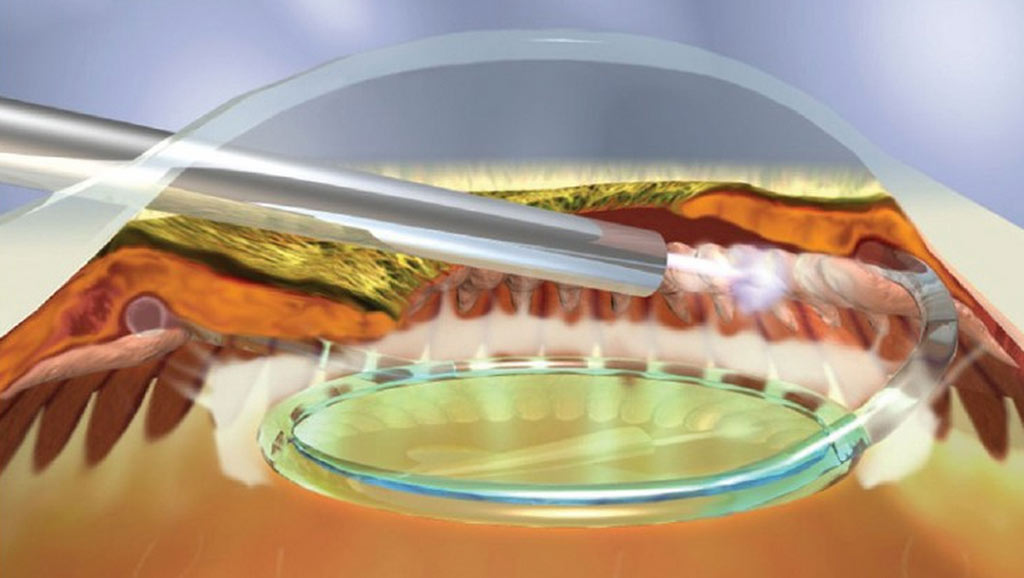What is Endocyclophotocoagulation (ECP)?
Surgeons often combine ECP with cataract surgery to help reduce intraocular pressure. The procedure involves coagulation of the ciliary processes under direct visualization so as to cause inflammation and scarring with subsequent decrease in the amount of intraocular fluid produced within your eye. Since glaucoma usually involves a drainage problem, reducing fluid production helps lower intraocular pressure.
After completing cataract surgery, the surgeon inserts a 20G special probe into the eye through the same cataract incision. This probe has both a special camera as well as fiberoptic cables that will help deliver the laser energy. Your surgeon will observe the internal structures of your eye on a TV monitor and will direct the laser energy to the ciliary processes under direct visualization. The surgeon adjusts the energy to blanch the processes and treats about 270 to 360 degrees around the eye for maximal effect.
After the procedure, your doctor will place an eye patch over your eye for the first 24 hours. The next morning, your doctor will remove the patch, examine your eye, and check your eye pressure. Your doctor will prescribe a regimen of postoperative drops for the following four to six weeks.
If the procedure is successful you can expect a decrease in the intraocular pressure and you possibly may come off some of your glaucoma medications. The laser procedure’s outcome becomes clear in about 6 to 8 weeks.
The procedure takes about 15 minutes to perform. Before the procedure, your doctor places a topical anesthetic drop and a contact lens on your eye. The doctor delivers the laser applications through a microscope similar to the one used in the office. After completing the laser, you wait while your doctor checks your eye pressure. Allow 2 hours for the entire procedure. You will need to use an anti-inflammatory drop in the eye for several days following the procedure.
Your doctor schedules several postoperative visits to monitor your eye pressure. Expect several weeks before the treated eye shows lower pressure. Early results show that your doctor can repeat the laser if necessary.
Benefits of the laser include no adverse events from added medications and the delay of a surgical procedure. Please feel free to discuss this laser or other procedures with your physician.


 DONATE NOW
DONATE NOW